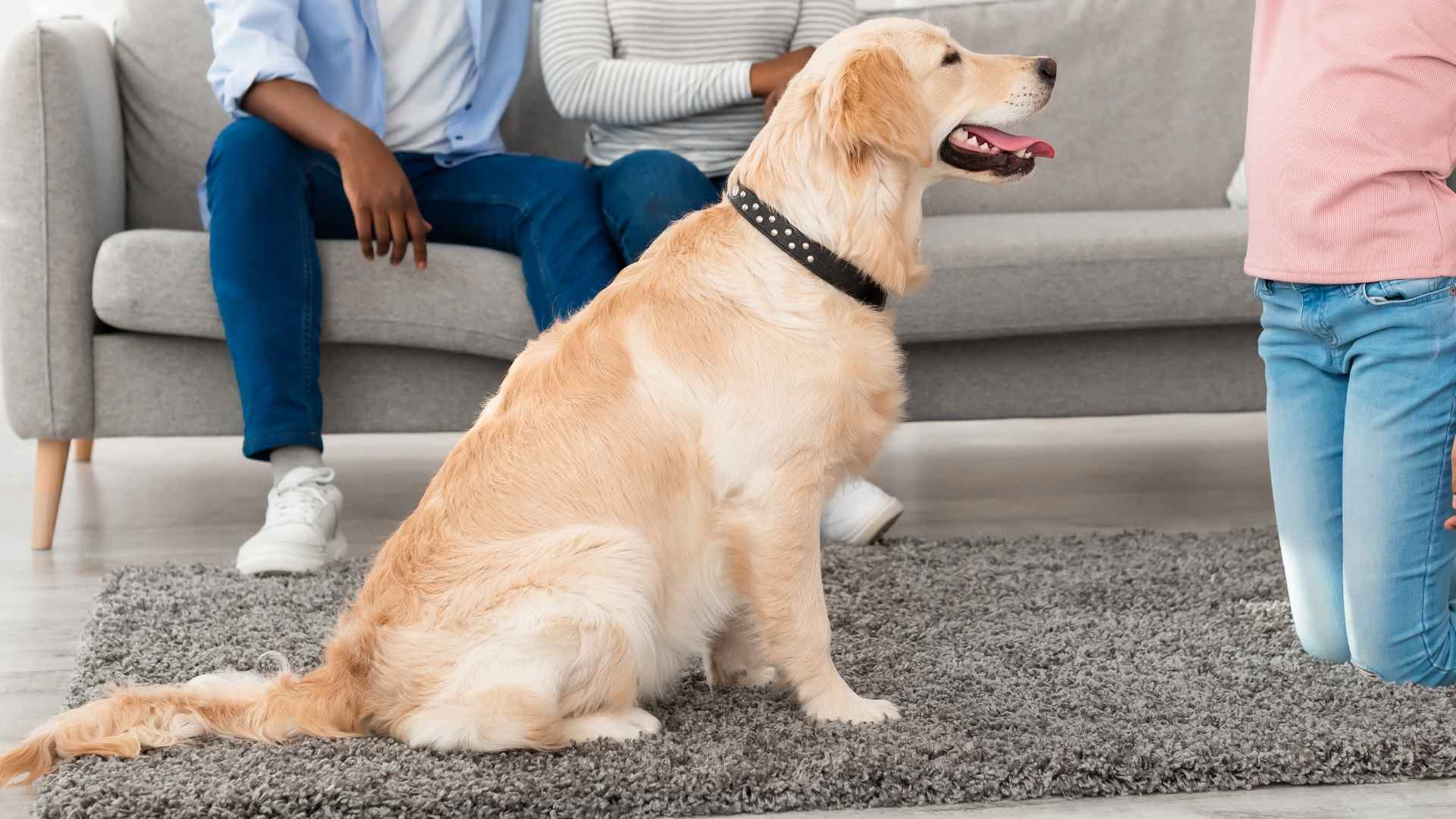Can a dog be smart and gentle enough for a toddler? Can they protect without being aggressive, play without going wild, and learn without being pushed? The answer lies in breed intelligence, and not all smarts are the same.
Some dogs are problem-solvers. Others are emotional readers. The best family dogs do both. Intelligence in a family setting means knowing when to engage, when to step back, and how to bond across all ages.
But with so many breeds out there, it’s easy to get lost in the options. If you’re looking for a dog that listens, learns, and fits into a home filled with daily chaos and quiet moments alike, we’ve got you covered.
In this guide, you’ll meet the smartest dog breeds that were made for family life—clever, kind, and endlessly loyal.
Smart Dog Breeds For Families
1. Labrador Retriever

Labrador Retrievers have a sharp memory for routines, quickly learning daily family patterns like school pickups or weekend outings. This makes them excellent with children who thrive on structure. They’re tuned in, not just obedient.
Sensitivity to Social Cues
They read human tone and body language with surprising accuracy, responding calmly to stress or excitement. That makes them excellent at de-escalating chaotic moments in busy homes. They don’t overreact; they interpret.
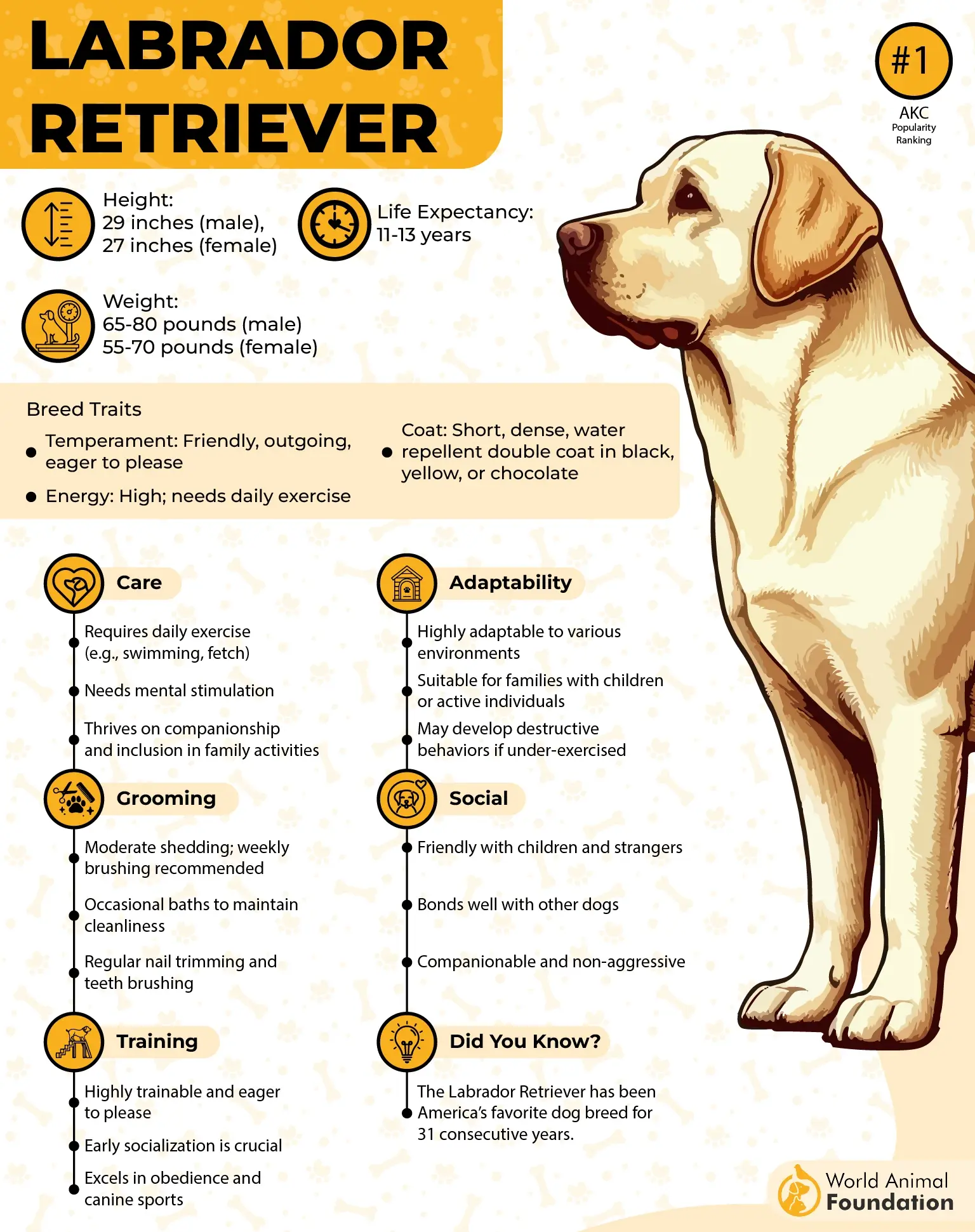
Natural Problem-Solving Skills
Labs can adapt to changes in their environment without hesitation, figuring out new layouts, commands, or obstacles efficiently. Their cognitive strength places them among the most intelligent dog breeds, particularly in adaptive intelligence.
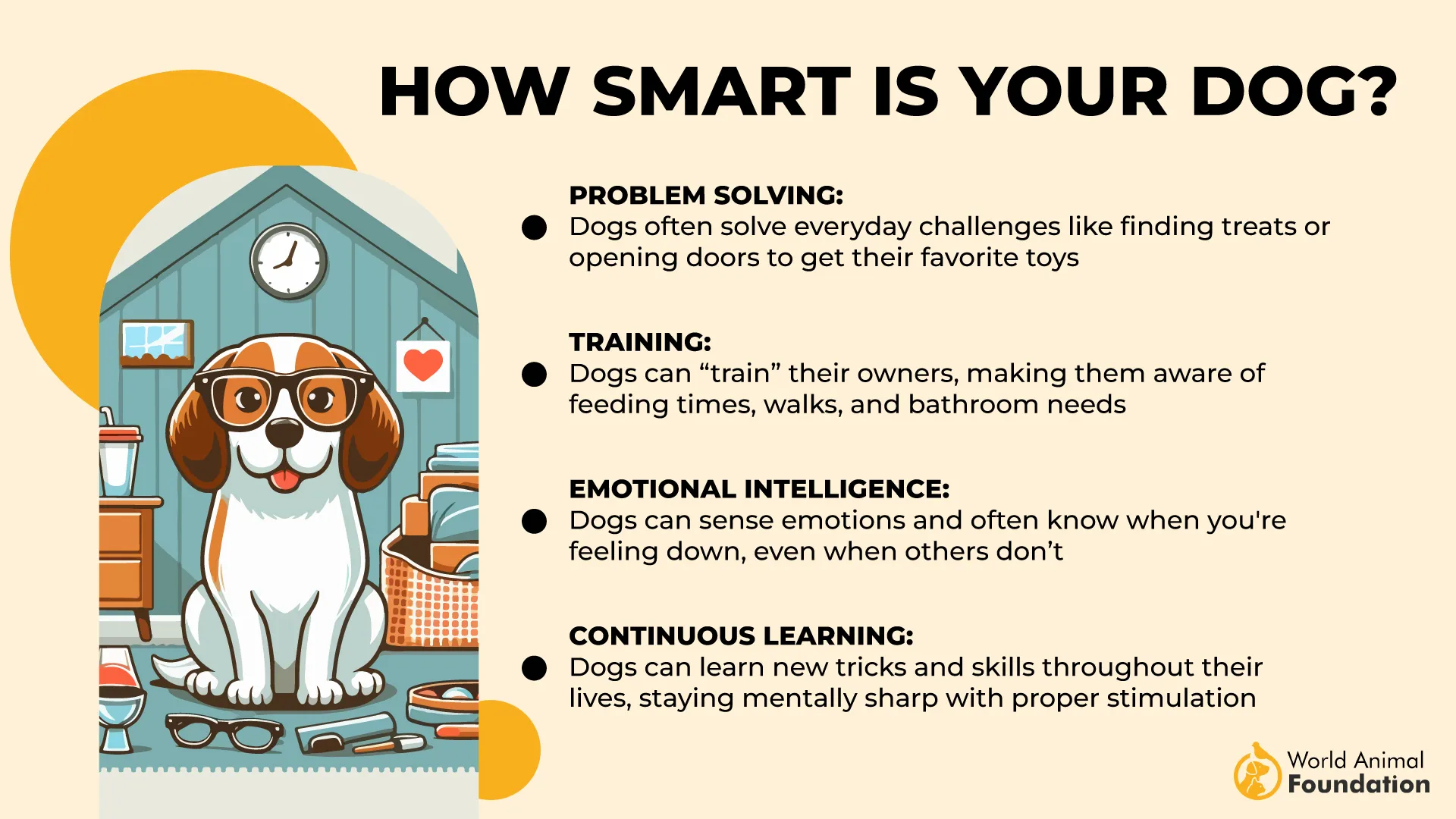
Trusted by All Ages
They’re consistently rated as ideal family dogs because they blend emotional awareness with physical control. While often listed among energetic dogs, their energy is directional—they know when to play and when to pause, especially around toddlers or seniors.
2. Golden Retriever

Golden Retrievers are known for their ability to retain multi-step commands, often remembering routines weeks after they’re introduced. This makes them especially suitable for families that rely on structure and consistency. Their memory supports daily predictability.
Emotional Responsiveness
They respond instinctively to subtle emotional cues like changes in posture or voice. This natural empathy makes them a comforting presence in homes with kids or elderly members. They pick up on shifts in energy before words are even spoken.
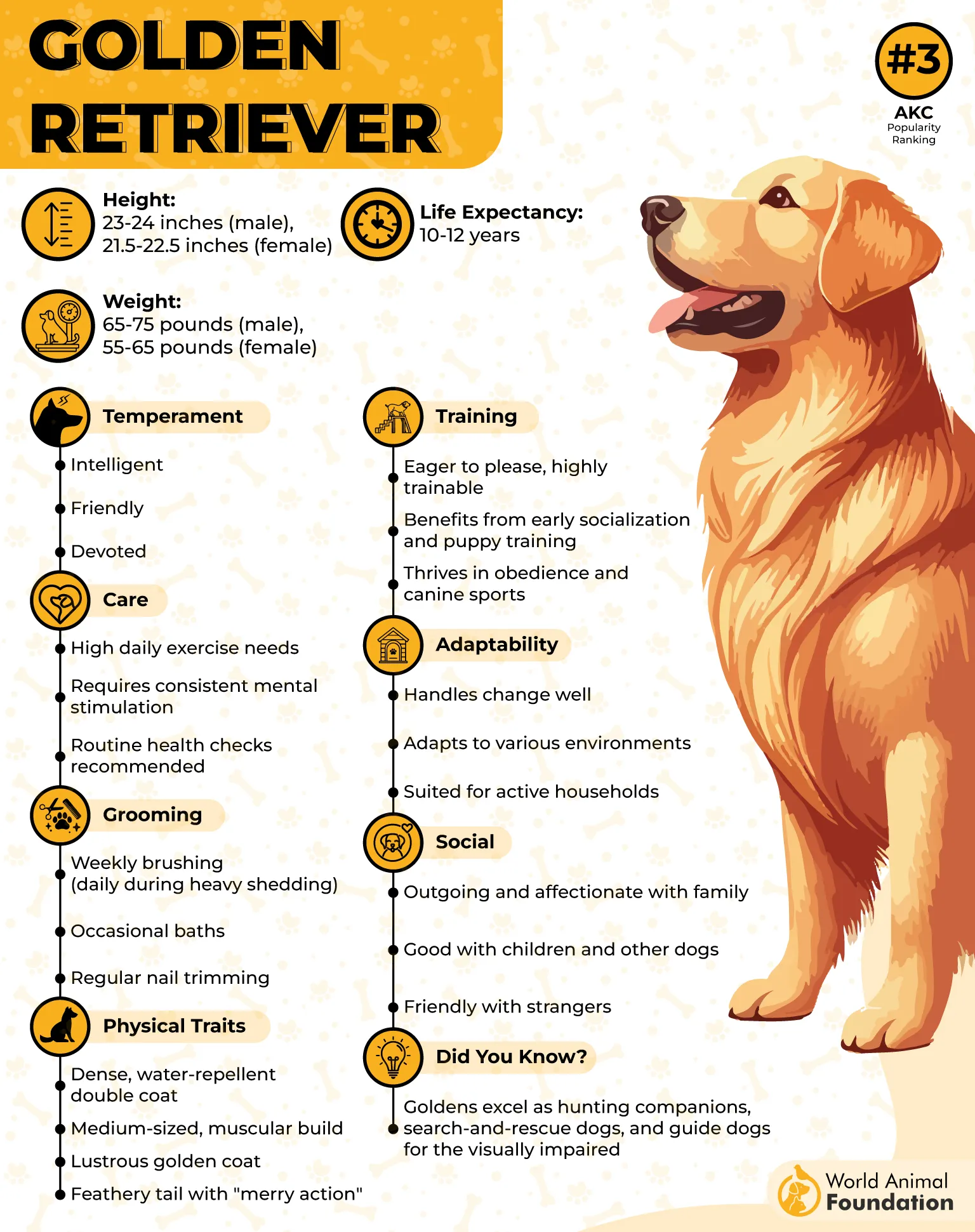
Precision In Task Learning
Used in search-and-rescue, Goldens excel in roles requiring accurate repetition, as per the AKC. That focus translates well into dog training, where they grasp complex commands and hand signals with minimal reinforcement. They work best with clear direction and calm guidance.
Peaceful Coexistence With Others
Golden Retrievers are often recommended for multi-pet households due to their steady behavior around other dogs. They remain composed even in unfamiliar or crowded situations. Across the dog world, they’re considered dependable companions in shared environments.
3. Border Collie

Border Collies excel at pattern recognition and environmental mapping—skills originally developed through centuries of selective breeding for livestock control. They don’t just follow commands; they anticipate them with timed responses. This precision builds trust in unpredictable household routines.
Mental Drive That Needs Direction
They’re constantly scanning for cues, often attempting to “work” even during play or downtime. Without regular mental engagement, they create their own challenges to solve, as per WebMD. That instinct stems from their origins as a herding dog, bred to handle complex movement patterns.
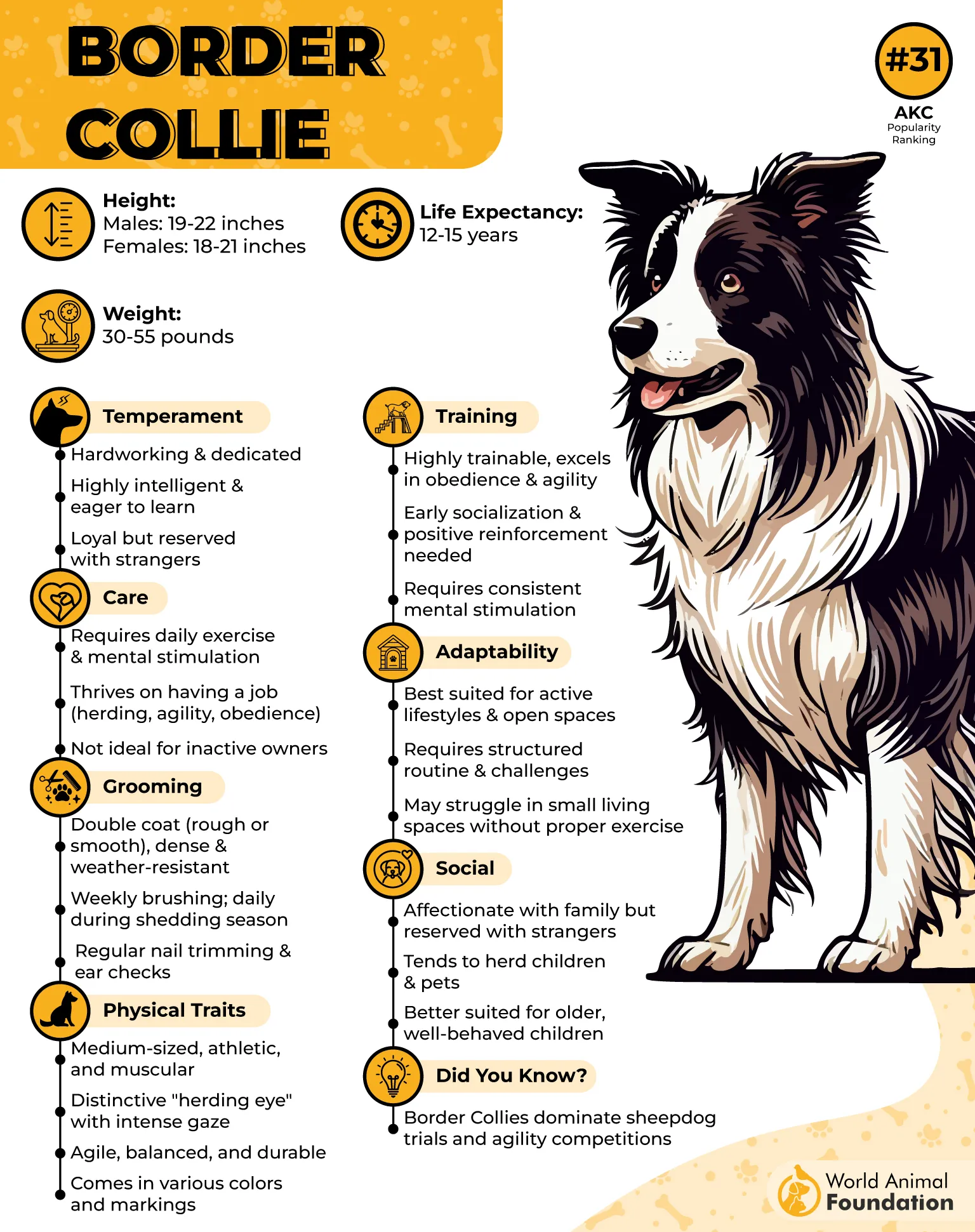
Responsiveness to Human Emotion
They adjust quickly to the tone and mood of a home, shifting energy levels based on the vibe of the moment. Their social adaptability helps them integrate well as family pets, especially in active households with varied routines.
Observant but Bonded
While independent in tasks, they remain closely attached to their humans, following them from room to room, even when uninvited. This combination of focus and connection makes them a rare blend: a working dog that also ranks as an affectionate breed among experienced dog owners.
4. Australian Shepherd
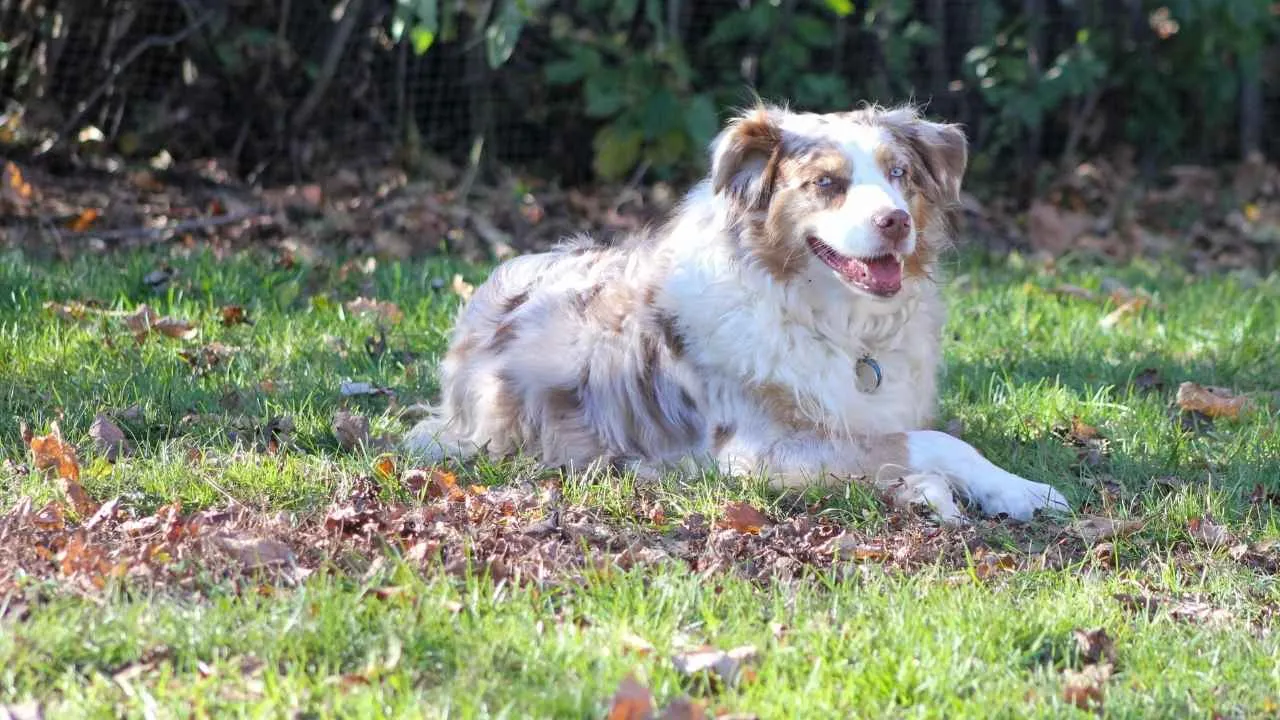
Australian Shepherds pick up on timing and patterns within a household faster than most breeds. They often respond to specific times of day or sounds associated with daily family routines. This keeps them alert and synchronized with home life.
Excellence in Complex Commands
They consistently perform well in trials involving layered tasks and quick decision-making. Their track record in obedience competitions is backed by high scores in utility and rally classes. Their learning speed supports families looking for advanced training options.
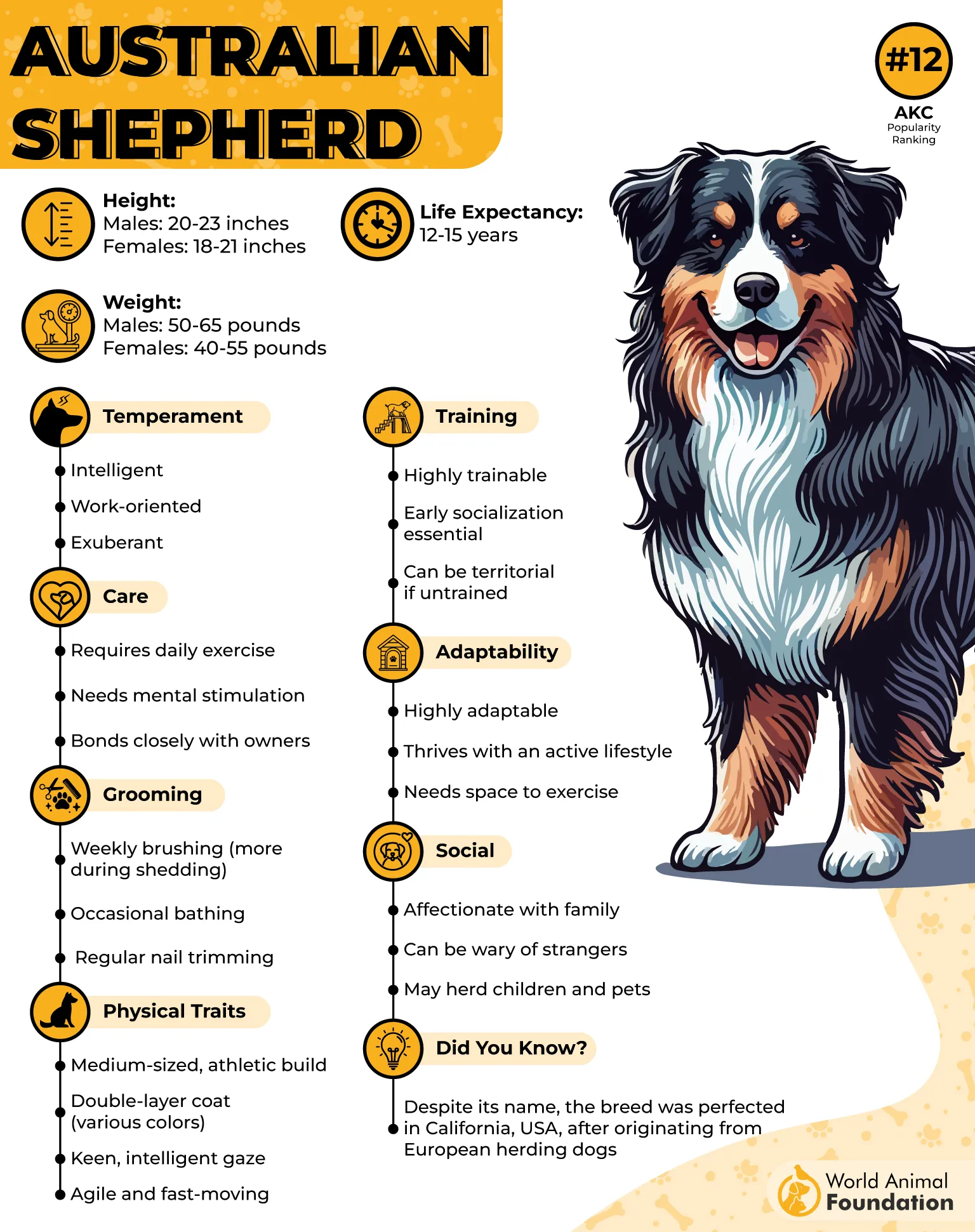
Emotionally Attuned Behavior
These dogs often stay close during quiet moments, medical recoveries, or changes in the home. Many pet parents notice how their presence becomes more grounded during stress. Their behavior naturally shifts in response to human energy.
Respectful in Multi-Pet Homes
Australian Shepherds observe the behavior of other animals before engaging, which helps avoid overstimulation. Their instinct to control is guided by observation rather than excitement. Among clever dogs, this breed shows balanced energy and strong environmental awareness.
5. Cavalier King Charles Spaniel

Cavaliers are unusually good at interpreting emotional shifts, especially in young children or elderly family members. They react not with noise or nervous energy, but by adjusting their pace and posture. Their calm pacing builds a safe and responsive environment indoors.
Consistency in Commands
They respond best to firm routines, especially when obedience training includes a gentle tone and repetition. Their willingness to follow commands improves with short, focused sessions rather than prolonged drills.

Friendly Coexistence
These dogs adapt easily in multi-pet homes, showing no territorial behavior even in tight spaces, as stated in Petplan. Whether it’s cats or larger dogs, they share without resource guarding. That’s why they’re frequently recommended for families with other pets already in the home.
Comfort-Focused Temperament
As one of the most people-oriented small dogs, they often nap near their humans and stay within sight. Yet they rarely interrupt or demand attention, making them ideal for homes that need quiet companionship during daily routines or rest hours.
6. Havanese
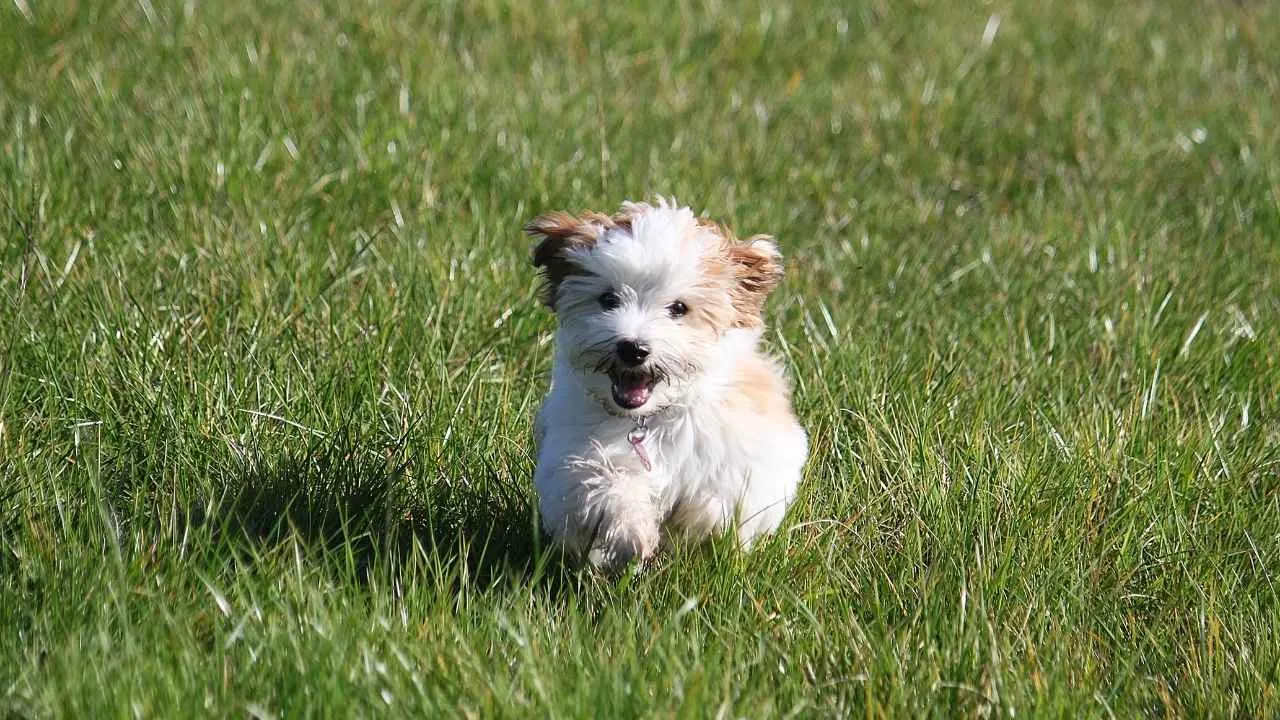
Havanese are highly attuned to vocal tone, often reacting to a change in pitch or volume before a command is even finished. This sensitivity helps them bond quickly with children and elders alike. They adapt communication styles depending on the energy in the room.
Compact but Perceptive
Though small, they consistently pick up on changes in household mood and adjust their behavior without being prompted. That emotional alignment gives them an edge in family dynamics. It’s awareness that goes beyond surface-level obedience.
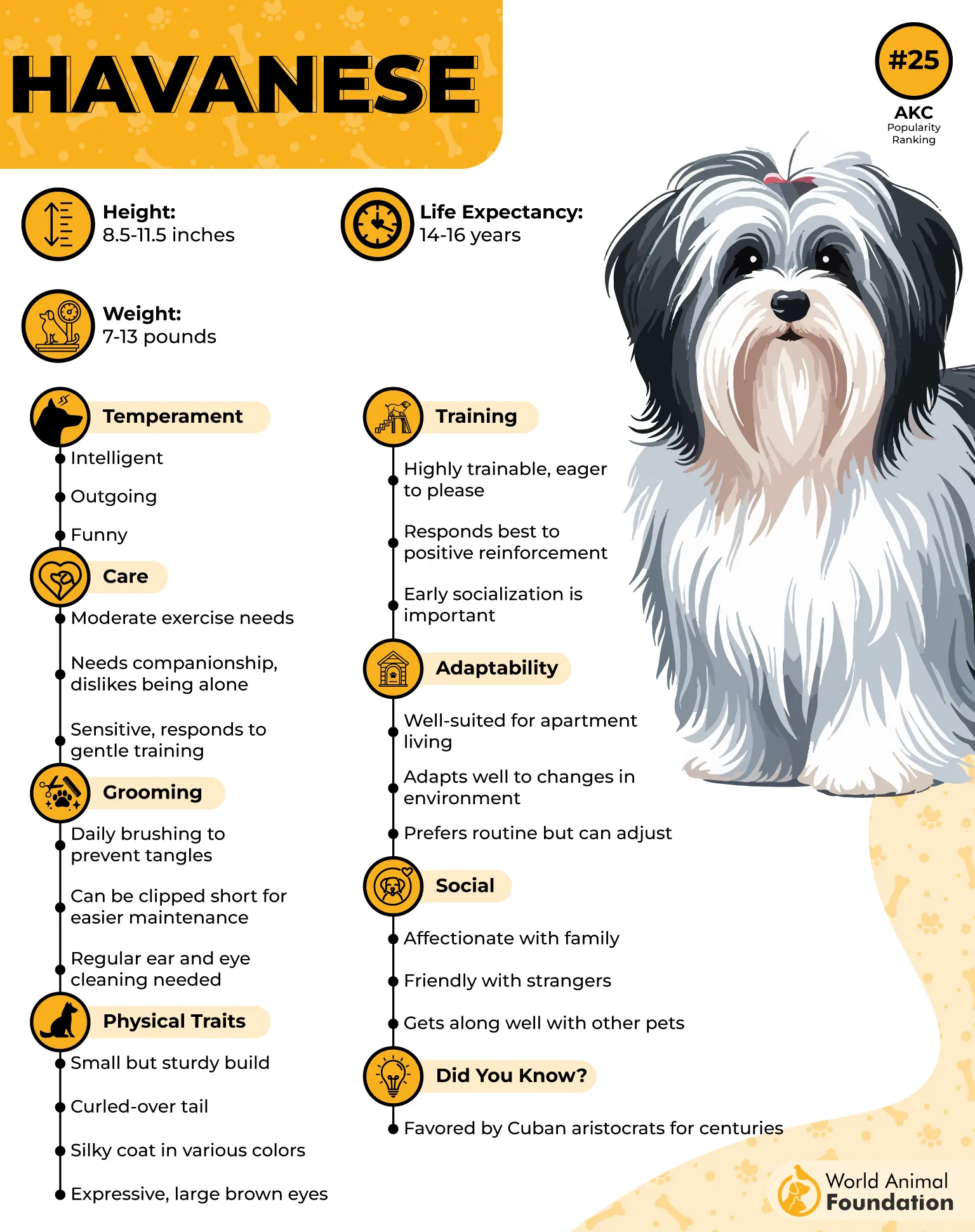
Rooted in Companion Work
They were originally bred as companion dogs for the Cuban aristocracy, trained to follow families indoors, outdoors, and even while traveling. Their role required social intelligence more than guarding or chasing prey. That intent still shows in how they behave at home.
Social Learning Starts Early
Their friendly nature makes them quick to welcome new people, but that openness grows best with early socialization. They thrive in environments where they’re introduced to varied voices, settings, and play routines early on. That helps prevent reactivity later in life.
7. Miniature Schnauzer
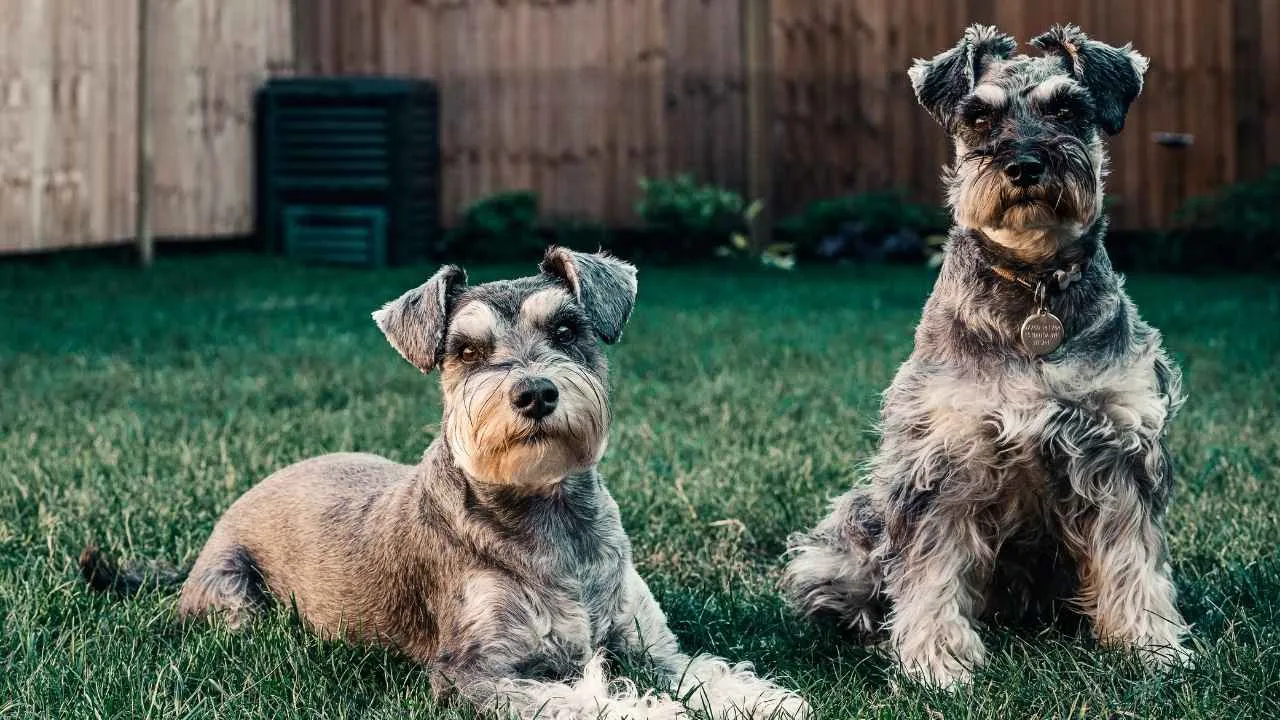
Miniature Schnauzers have sharp hearing and fast reflexes—they often detect sounds like distant doorbells or approaching footsteps before larger breeds react. This makes them highly responsive during household movement. Their alertness is automatic, not overactive.
Routine-Oriented Thinkers
They follow consistent patterns within the home, remembering feeding times, visitor behaviors, and owner cues without confusion. This breed thrives in structure, learning new rules quickly, and adjusting to changes in routine with minimal stress.
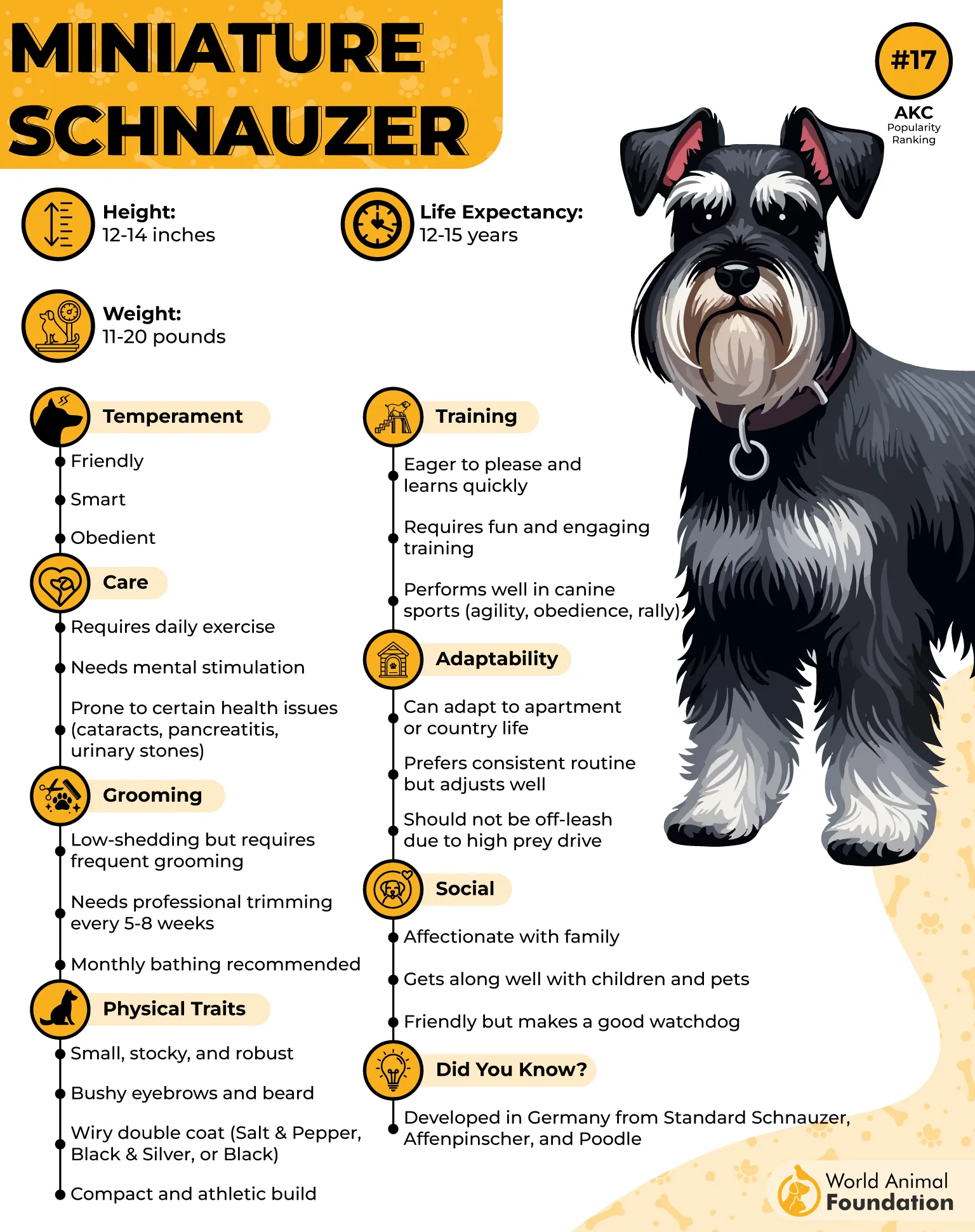
Mental Engagement Drives Behavior
Their energy is directed more by curiosity than chaos. Mental puzzles, interactive feeders, and memory tasks hold their attention far better than repetitive play. They’re thinkers first, making them reliable among intelligent family dogs.
Bonded Yet Independent
Miniature Schnauzers often act like watchdogs in small bodies but aren’t overly needy or clingy. They’re protective, observant, and emotionally in tune with household energy. They make great companions for families who want attentiveness without constant demands.
Conclusion
Smart dogs aren’t just about obedience—they’re companions with a keen sense of routine, emotion, and energy. Whether they’re therapy dogs offering quiet support or rescue dogs full of gratitude and love, the most highly intelligent breeds know how to fit right into family life.
With proper training and enough physical exercise, these dogs thrive in homes filled with movement, conversation, and care. Many are known for their playful nature, eager to play fetch or join in daily family activities.
Others excel as service dogs, learning tasks that help beyond companionship. No matter the size of your home, the right dog will match your pace, with heart and head in perfect sync.


